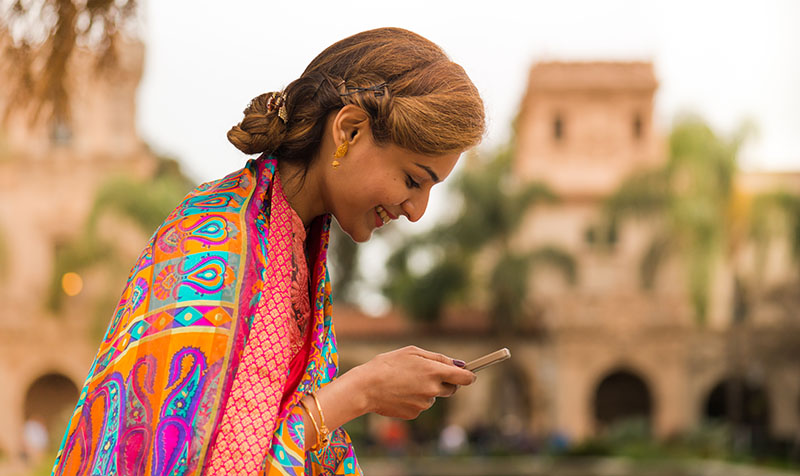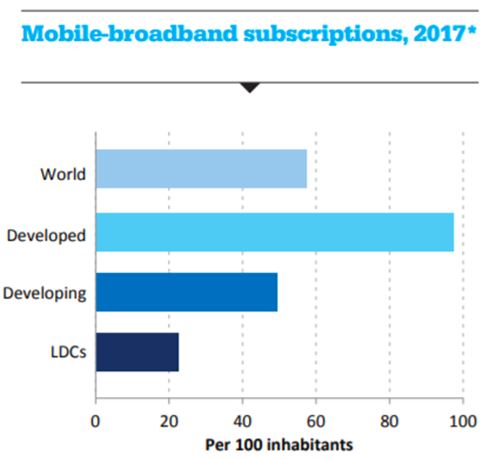
What if everyone — regardless of location, socioeconomic status, or age — had an internet-enabled mobile phone? Right now, it’s estimated that only 30 percent of the world has a smartphone, which means the other 70 percent either doesn’t want one, can’t afford one, or is looking for an alternative.
In fact, the high cost of smartphones in relation to income levels continues to constrain universal access, especially in emerging markets. For those living on below $2 per day, a $100 mobile phone accounts for 14 percent or more of their annual income, according to GSMA.
To put that into perspective, based on the average annual income of $45,000 in the U.S., Americans would be spending $6,300 on a smartphone. To make matters worse, unlike developed markets, there are few financing options for buying mobile phones in emerging markets. So instead of a $100 or more device, a phone in the range of $15–35 would be closer to the affordability threshold for this group. However, smartphone costs are not expected to drop enough to make a significant difference to low-income groups in the near future.

Internet access at everyone’s fingertips
According to the International Telecommunications Union’s ICT “Facts and Figures for 2017”, only 15 percent of households in the developing world have internet access at home. In these countries, many internet users only have access from work, schools, and universities or other shared public connections outside the home.
Fortunately, the challenges of broadband restrictions and internet use through a personal computer can be overcome. People are more likely to turn on their mobile device to access the internet than their desktop computer, resulting in a higher adoption rate and use of mobile phones.
At Kai, we’re powering an emerging global ecosystem of affordable digital products and services that help overcome these connectivity issues. Specifically, our mobile operating system KaiOS enables a new category of lite phones that require limited memory, offering smartphone-like functionality at a fraction of the cost.

These affordable, internet-enabled mobile phones have the greatest potential for delivering unprecedented opportunities in education, communication, entertainment, and business to both established and less developed markets. This includes giving many users first-time access to the internet.
Connecting the unconnected
Looking at emerging markets as a whole, there has been a dramatic transformation in connectivity. According to the ICT Facts and Figures 2017, mobile broadband subscriptions have grown more than 20 percent annually in the last five years and are expected to reach 4.3 billion globally by end 2017.

With internet-enabled mobile phones, users will be able to connect with each other like never before. UNCTAD’s World Investment Report found that access to the internet directly correlates to productivity gains in sectors like education, healthcare, financial services, agriculture, retail, and government, among others.
In Indonesia, for example, mobile banking became a catalyst for the peer-to-peer lending firm Amartha, when the company moved into fintech. While three quarters of the country’s population does not have a bank account, the addition of mobile technology to Amartha’s services allowed for 30,000 microentrepreneurs to receive $5.1 million in loans – providing new opportunities and revenues for their families. Amartha was also able to disburse nearly 600 percent more loans and raise the maximum loan value from $225 to $750 to provide additional funds to its customers.
The last piece of the digital divide puzzle: apps
While making devices affordable is an important step in bridging the digital divide, it’s not enough by itself. The other crucial piece is content. Without the same world-class apps smartphone owners enjoy, as well as apps tailored at these new user groups, the digital divide remains in place
Together with our partners we’re also solving this remaining piece of the puzzle. KaiOS is one of only three global operating systems capable of supporting the most popular third-party apps, offering consumers an alternative to smartphones. Soon, you’ll be able to download mobile apps, such as social media, instant messaging, games, video calls, and even intelligent voice assistants, without the expensive price tag that comes with owning a smartphone.
Alongside our partners, we want to go from digital divide to digital opportunity for all members of society. With the affordability lowering and the number of apps on KaiOS increasing every month, we get a step closer to fulfilling this mission every day.
Looking for help with your KaiOS phone? Visit our Help Center. Have a partnership idea? Click here to fill out the form. Our sales will get in touch with you shortly.
FIRST LAUNCH ALL KAIOS APPS LIK WHATSAP FB ECT, IN JIOPHONE AND AFTER U CAN DO CRAPPIN